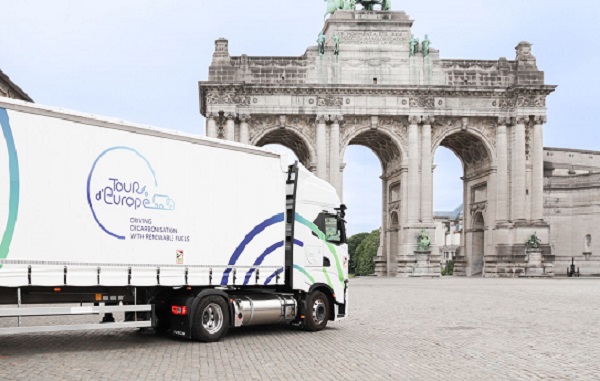.png)
Can Tata Motors Pull Off Another JLR with Iveco?
The €3.8 billion debt-financed acquisition requires flawless execution simultaneously across multiple regulatory jurisdictions, technology platforms, and competitive battlegrounds.


Dev Chandrasekhar advises corporates on big picture narratives relating to strategy, markets, and policy.
August 13, 2025 at 12:19 PM IST
When Tata Motors acquired Jaguar Land Rover from Ford for $2.3 billion, or ₹202 billion, in 2008, sceptics wondered if the Indian truck maker could revive two struggling British luxury brands. In 2024-2025, JLR generated £29.0 billion, or ₹3,428 billion, in revenue, nearly 2.5 times more than the ₹1,235 billion of Tata's entire domestic business. Now, with its €3.8 billion, or ₹388.6 billion, bet on Italy's Iveco, Tata is banking it can work the same magic again.
Tata Motors' €14.1, or ₹1,442, per share offer for Iveco represents a hefty 34-41% premium to the three-month volume-weighted average price, even after accounting for an estimated €5.5-€6.0 extraordinary dividend. The annual revenue of the combined commercial vehicle entity would be €22 billion, or ₹2.25 trillion, nearly double Tata's current operations.
On paper, the fit looks compelling. Tata dominates heavy trucks in India, Africa, SAARC, and the Middle East, while Iveco commands light commercial vehicles and buses across Europe and Latin America. The geographical split creates a combined entity with no operational overlap, theoretically allowing each business to leverage the other's strengths without cannibalising.
The Iveco acquisition closes by April 2026, while Tata demerges its commercial vehicle business effective October 2025. Post-demerger, the assets split is 60:40 between passenger vehicle and commercial vehicle businesses. The tax-neutral demerger grosses combined revenue by ₹20 billion from eliminated intercompany transactions, with CV operations showing as discontinued in PV financials through FY26.
Iveco generated €14.1 billion, or ₹1,442 billion revenue and €891 million, or ₹91.1 billion adjusted EBIT in CY24—substantial scale transforming the standalone CV entity. However, the €3.8 billion, or ₹388.6 billion,bridge financing from Morgan Stanley and MUFG initially inflates debt levels and borrowing costs before being replaced with cheaper permanent financing over 12 months.
Iveco brings expertise in alternative fuels, natural gas and hydrogen, alongside advanced driver-assistance systems and software-defined vehicles. This complements Tata's cost-engineering prowess and emerging market focus. Tata has already launched trials of hydrogen-powered heavy-duty trucks and operates over 2,600 electric buses, while Iveco's European experience could prove vital as emissions regulations tighten globally.
However, the elephant in the room remains Chinese competition. Companies like BYD, CATL, and traditional manufacturers pivoting to EVs are rapidly gaining global market share with cost-effective electric commercial vehicles. Chinese firms have mastered battery technology and supply chains in ways that Western manufacturers are still trying to match.
The Iveco acquisition, while providing European market access, also saddles Tata with higher-cost operations just as Chinese competitors are pricing aggressively in key markets.
To service the €3.8 billion bridge facility from Morgan Stanley and MUFG, Tata projects annual free cash flow synergies of just 0.5% of joint revenue from FY28, roughly €110 million annually. Set against the €3.8 billion acquisition cost, this implies a payback period stretching well beyond 10 years. And that’s assuming Chinese competitors don't erode market share.
More concerning is the operational reality behind the complementarity narrative. While the lack of geographical overlap eliminates direct competition, it also means Tata is venturing into European light commercial vehicle markets where its low-cost manufacturing advantages may prove less relevant, particularly as the market shifts to electric powertrains. European customers prioritise emissions compliance, safety standards, and service networks rather than the attributes that drive success in Indian heavy truck markets.
The electric vehicle transition adds another layer of complexity. Commercial vehicle electrification lags passenger cars due to range, payload, and charging infrastructure constraints, but regulatory pressure is mounting. Both Tata and Iveco face substantial capital investment requirements to develop competitive electric offerings while Chinese manufacturers already enjoy scale advantages in batteries and electric drivetrains.
Tata's confidence shows in its commitment to invest billion annually post-acquisition more than double its current capex run rate. The company projects reaching EPS breakeven within two years and repaying the acquisition debt within four years. Given the declining trend in domestic operations, intensifying Chinese competition, these projections require flawless execution across multiple regulatory jurisdictions, technology platforms, and competitive battlegrounds simultaneously.
Still, Tata's track record deserves respect. The company has demonstrated patience with long-term investments and an ability to navigate complex cross-border integrations. With the Iveco acquisition, Tata is betting that it can replicate its JLR success in a fundamentally different market segment while reducing its dangerous over-reliance on the luxury British brands.
Whether Tata can defy the odds while navigating European regulations, Chinese competition, and the electric transition will depend on execution skills that even the most detailed financial projections can't fully capture.



